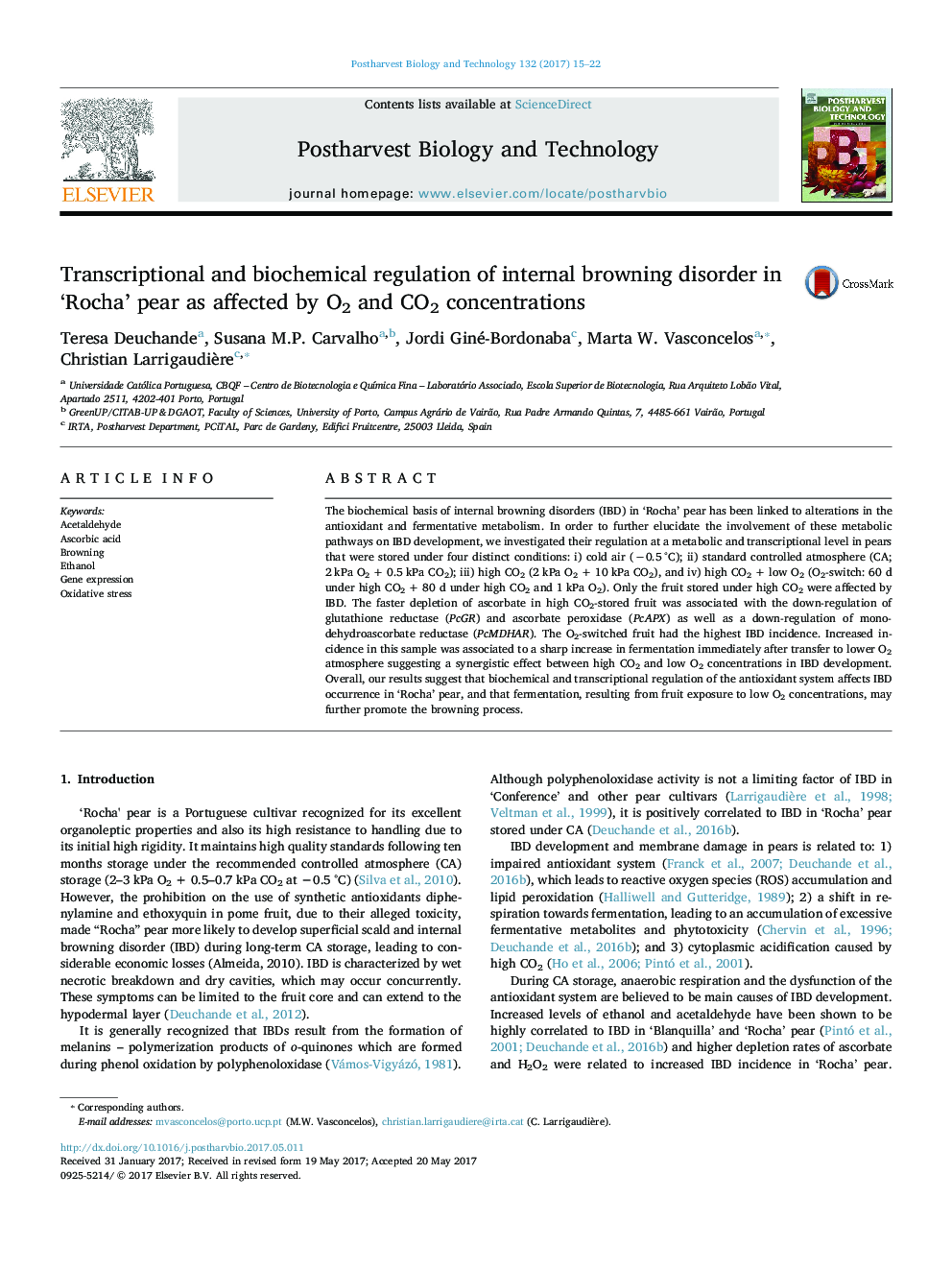| Article ID | Journal | Published Year | Pages | File Type |
|---|---|---|---|---|
| 5762665 | Postharvest Biology and Technology | 2017 | 8 Pages |
Abstract
The biochemical basis of internal browning disorders (IBD) in 'Rocha' pear has been linked to alterations in the antioxidant and fermentative metabolism. In order to further elucidate the involvement of these metabolic pathways on IBD development, we investigated their regulation at a metabolic and transcriptional level in pears that were stored under four distinct conditions: i) cold air (â0.5 °C); ii) standard controlled atmosphere (CA; 2 kPa O2 + 0.5 kPa CO2); iii) high CO2 (2 kPa O2 + 10 kPa CO2), and iv) high CO2 + low O2 (O2-switch: 60 d under high CO2 + 80 d under high CO2 and 1 kPa O2). Only the fruit stored under high CO2 were affected by IBD. The faster depletion of ascorbate in high CO2-stored fruit was associated with the down-regulation of glutathione reductase (PcGR) and ascorbate peroxidase (PcAPX) as well as a down-regulation of monodehydroascorbate reductase (PcMDHAR). The O2-switched fruit had the highest IBD incidence. Increased incidence in this sample was associated to a sharp increase in fermentation immediately after transfer to lower O2 atmosphere suggesting a synergistic effect between high CO2 and low O2 concentrations in IBD development. Overall, our results suggest that biochemical and transcriptional regulation of the antioxidant system affects IBD occurrence in 'Rocha' pear, and that fermentation, resulting from fruit exposure to low O2 concentrations, may further promote the browning process.
Related Topics
Life Sciences
Agricultural and Biological Sciences
Agronomy and Crop Science
Authors
Teresa Deuchande, Susana M.P. Carvalho, Jordi Giné-Bordonaba, Marta W. Vasconcelos, Christian Larrigaudière,
